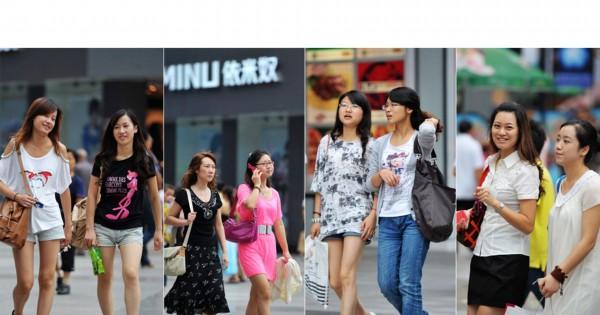.
In 2024, understanding the evolving preferences and behaviors of Chinese female consumers is crucial for brands aiming to succeed in the market. Here are ten trends to consider for this demographic, along with five critical questions brands should ask to tailor their strategies effectively.
10 Trends Among Chinese Female Consumers in 2024:
- Eco-conscious Choices: A growing preference for sustainable and environmentally friendly products, from cosmetics to fashion and beyond.
- Premiumization: Willingness to pay more for high-quality, premium products that offer enhanced experiences or superior results.
- Digital Savvy Shopping: Greater reliance on digital platforms for shopping, influenced by integrated AR and VR technologies that enhance online shopping experiences.
- Personalization: Demand for personalized products and services, from skincare items tailored to specific skin types to customized dietary supplements.
- Beauty and Skincare Innovation: Continual interest in the latest beauty trends, including microbiome health, natural ingredients, and scientifically-backed products.
- Local Brands Surge: Rising patriotism influencing purchasing decisions, with a marked preference for local over foreign brands, provided they meet quality and luxury standards.
- Fitness and Active Lifestyles: Increased participation in fitness and wellness activities, leading to growth in activewear and related health products.
- Solo Economic Impact: More single women are making significant economic decisions independently, focusing on their personal and professional growth.
- Tech-Integrated Life: Enhanced adoption of technology not just in daily routines but also in managing personal health and financial decisions.
- Health and Wellness Focus: Increased interest in products that promote health, well-being, and longevity, such as organic supplements and stress-relief solutions.

5 Questions Brands Should Ask:
- Who is our target customer within the Chinese female demographic?
- Understanding specific segments such as age, income level, and lifestyle can help tailor marketing messages and product offerings.
- What are the primary values that influence their purchasing decisions?
- Are they driven more by sustainability, quality, brand origin, or innovation?
- How do they prefer to receive information about products?
- Determining whether Chinese social media, influencers, traditional media, or other digital platforms are most effective can optimize marketing strategies.
- What role does technology play in their shopping experience?
- Assessing the importance of mobile apps, augmented reality, and online reviews in their purchase process.
- How can we create a Specific community around our brand?
- Considering strategies for building brand loyalty, such as engaging with Chinese female customers on social media, offering memberships or loyalty programs, and providing value through educational content.
By analyzing these trends and considering these questions, brands can develop more effective strategies to connect with and engage Chinese female consumers, ensuring relevance and boosting market performance in 2024.
Analyse of Philip CEO of GMA
Chinese women control the finance in the family
In China, 51.6% of the women control the finance in a family, 44.5% of them negotiate with other members and only 3.9% don’t. In Shanghai which is famous for its henpecked husbands, wives dominate 27% of families and husbands only take up 14%!

It’s been discovered that their consumption focus now is shifting to online consumption. In big cities, 44% of women are getting used to online purchases and the percentage in small cities and towns is 23%.
.1. Online Shopping
Now online shopping has become very popular among Chinese girls and ladies. Among the career ladies, 87.7% surf online frequently. And from the Internet, they can find the same goods as those in shopping malls, but usually half the price. So girls can get what they want and save money at the same time.
And the survey shows that most female online consumers in China like online shopping malls, search engines, and videos.
.2. They like video, make research before buying
According to the DCCI data, video website has become the third source for Chinese female to get information, after searching engine and online shopping mall. With the increasing concern about the video, the value of video marketing also increases.
Chinese, especially females, would like to make the decision after they see the products. As a result, they tend to trust what’s in the video because it not only allows them to see the products but also to hear them.
.
3. Care about Packaging More
It seems very difficult for Chinese girls to be rational in front of something well-packed. Sometimes they can be so crazy that they will neglect the usefulness or price of the product, even including expensive goods like home appliances and clothing. That’s also why Chinese people say “women’s money is easy money”.
Concept of these famous panda shops for example
4. Special sense of beauty
Chinese girls have a quite special sense of beauty. For Chinese girls, white and smooth skin is the symbol of beauty. But now, with the spreading over-weight problems, body shape is becoming more and more important for Chinese girls.
As a result, their bags are full of cosmetics that help them become slender and white not like western girls with sunscreen all over their bodies.
5. Impulse buyers
Young girls in China, especially those born after the 1990s, seem to have difficulty holding their consumption. Most of them were spoiled when they were young. So they get used to spending money “generously”.
In another way, they suffer great pressure from the company as well as their parents because everybody pins their hopes on their only kid in the family. And shopping can help them to release the great pressure.
These two reasons both make girls shop less rationally. Many can be their reasons to buy something things such as discounts and star endorsements.

6. Self-centered
Different from the older generation women, today’s Chinese girls are very independent mentally and highly self-centered. It’s also revealed in their consumption, among ladies from 20-30 years old, 56% of them will spend their money first on clothing, perfume, and cosmetics. Only 6% of them will consider family.
This trend has also been reflected in their choice of goods. You will discover that fewer and fewer girls are good at picking gifts for others. On the other hand, more and more of them choose gifts according to their own taste. Maybe it only happens to me and all my friends.

.
7. Brand followers
For most female Chinese, luxury brand means quality + taste + history. There are 62.1% of Chinese females believe that brand products are expensive for their quality and duration.
And Chinese females are also addicted to comparing with others. So they have one more strong reason to buy big luxury brands because it can give them a big plus in comparison.
Little Red Book (Xiaohongshu or RED) is a unique social media and e-commerce platform in China, particularly popular among women. This platform merges lifestyle sharing with product discovery and shopping, making it a dynamic space for female users to explore and buy products based on user-generated content. Here’s a deeper look into Little Red Book:
Little Red Book To target Chinese Ladies
Launched in 2013, Little Red Book quickly became one of China’s fastest-growing social media platforms, with a heavy emphasis on lifestyle, beauty, fashion, and travel. Its core demographic consists predominantly of urban women aged between 18 and 35, who are keen on exploring and purchasing luxury goods, beauty products, and health items.
Unique Features:
- User-Generated Content: Users create posts and share reviews about their daily lives and various products they use, influencing the buying decisions of their peers.
- E-commerce Integration: It seamlessly combines social media features with e-commerce capabilities, allowing users to buy products directly through the app.
- Community Engagement: The platform fosters a strong community feel, with users often looking to the app for recommendations on just about anything—from makeup to meal recipes.
- Authenticity and Trust: Little Red Book has strict regulations to ensure reviews are genuine, fostering an environment of trust and reliability.
- International Products: The platform is known for its strong focus on international brands, which attracts users interested in overseas products that may be harder to source locally.
Importance for Brands:
For brands targeting Chinese women, Little Red Book offers a valuable space to build brand presence and loyalty. The platform’s review and recommendation system allows for high levels of user engagement and organic brand promotion through word-of-mouth. Here’s why brands, particularly those in fashion, beauty, and health sectors, find Little Red Book indispensable:
- Targeted Marketing: Brands can target their campaigns very precisely thanks to the platform’s rich user data and analytics.
- Brand Storytelling: The emphasis on narratives allows brands to tell their stories, connect emotionally with users, and enhance brand identity.
- Influencer Collaborations: Collaborating with popular users on the platform can significantly boost brand visibility and credibility.
- Direct Feedback: Brands receive immediate and actionable feedback from their target audience, allowing for quick adjustments to products or strategies.
- Product Launches: New products can be introduced effectively using tailored marketing strategies based on extensive user behavior data.
Strategy Tips:
- Engage Authentically: Brands should focus on creating genuine and engaging content that adds value to the community.
- Monitor Trends: Staying up-to-date with trending topics on the platform can help brands align their products with current user interests.
- Utilize Visual Content: High-quality images and videos are crucial on Little Red Book, as they increase engagement and appeal more effectively to the audience.
Little Red Book represents a vibrant, trend-sensitive community perfect for brands looking to expand their reach within China, particularly those aiming at the affluent, modern Chinese woman.
8. Easily Influenced
Chinese females are becoming more and more self-centered but not independent. They can be easily influenced by their shopping mates and friends because when they buy something, they will ask the advice from another one. So advice from “another one” is very important for them.
And with popularization, the role of a net friend is also important because female Chinese can be greatly influenced by and trust them, especially those Key Opinion Leaders (KOL) online.

.





2 comments